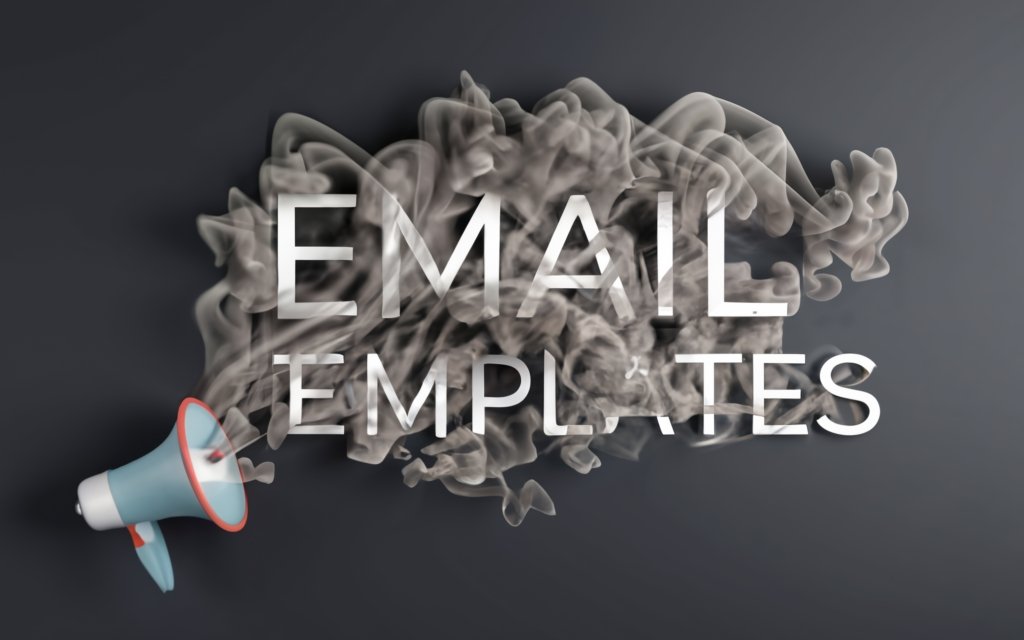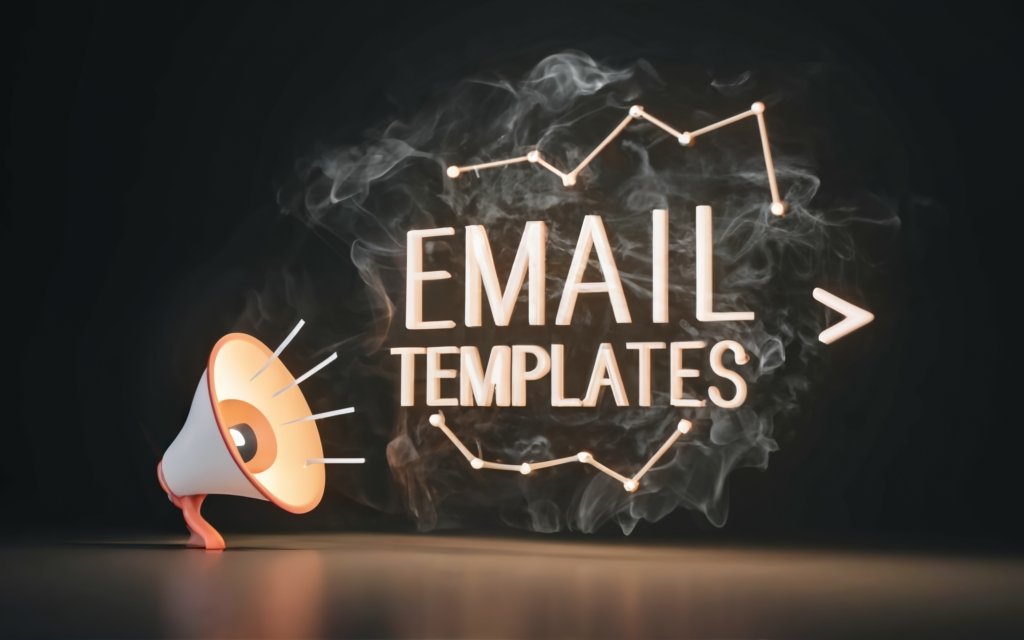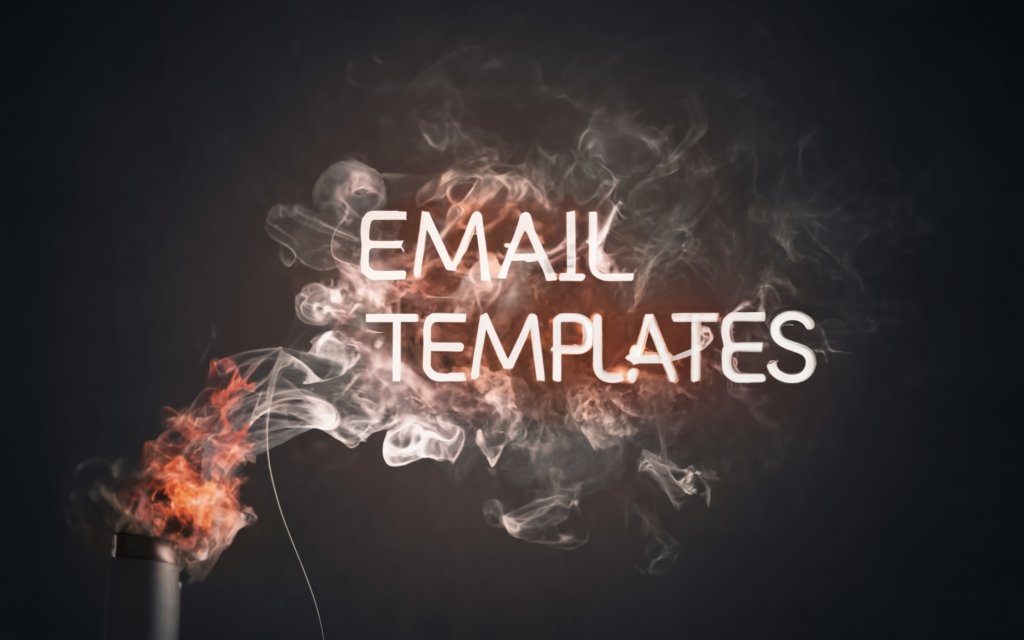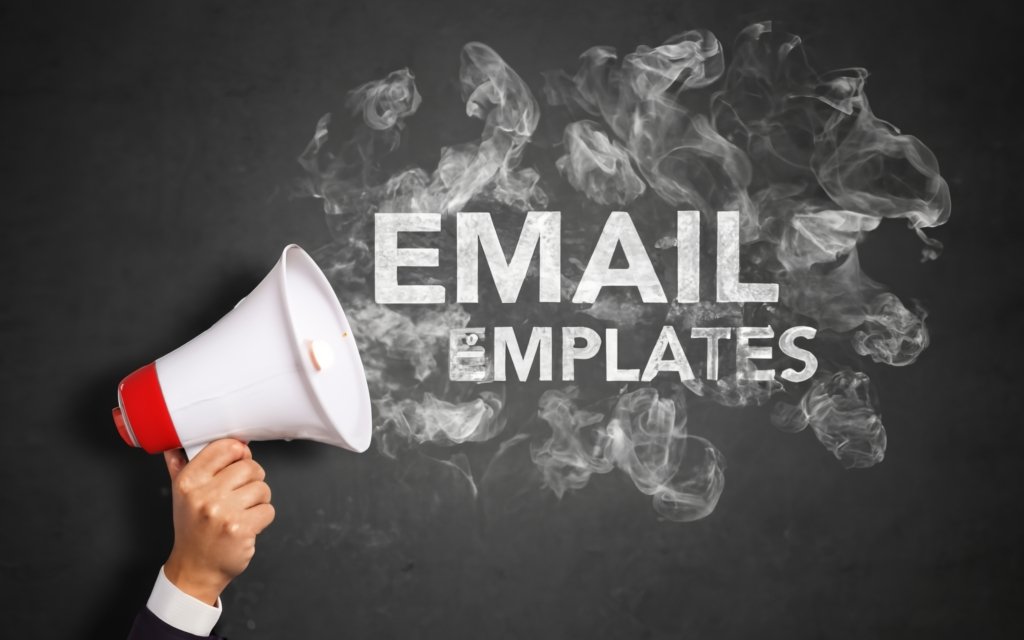Are your Salesforce emails bland, inconsistent and time-consuming to create? Learn how to design beautiful templates for quick, effective customer communications.
In this comprehensive guide, we’ll explore Classic and Lightning templates, the powerful drag-and-drop Email Builder, expert tips for engagement and deliverability, automating templates, and much more!
Whether you’re in sales, marketing, or support, thoughtfully crafted templates will make communicating with customers a breeze. Let’s dive in and start supercharging your Salesforce emails today!
An Introduction to Salesforce Email Templates
Sending professional, engaging emails is crucial for success in sales and marketing, but it can also be time-consuming and challenging to do this consistently at scale. This is where Salesforce email templates come heroically to the rescue!
Email templates in Salesforce allow you to create pre-defined email layouts, content, and messaging that can be reused across your organization. Templates make it simple to quickly personalize and send polished emails that align with your brand and Communication guidelines.
In this complete guide, we’ll explore all you need to know about getting the most from Salesforce email templates to supercharge your customer communications.
What Are Salesforce Email Templates?
Email templates are pre-designed emails that contain layouts, text, images, and other content that can be reused to send emails from Salesforce.
The templates typically include:
- Email header, footer, and layout formatting
- Default message content, headings, and body text
- Images and logos
- Merge fields to dynamically insert data from records
- Call to action buttons
Templates allow you to create an email once in a reusable format instead of starting from scratch each time.
When you want to send an email in Salesforce, you can select a template, customize it if needed by adding text or changing merge data, and quickly send out professional communications.
Classic vs Lightning Email Templates
There are two main categories of email templates available in Salesforce:
Classic Email Templates
These legacy templates have been around since the early days of Salesforce. There are four types available:
- Text – Plain text template
- HTML – Customizable with merge fields
- Custom HTML – For advanced custom HTML/CSS
- Visualforce – Uses Visualforce markup language
Classic templates can be used in both Salesforce Classic and Lightning experiences.
Lightning Email Templates
These modern templates were introduced with Lightning Experience. They support Enhanced Letterheads for branding and use Handlebars merge syntax for dynamic field insertion.
The key features include:
- Email Template Builder visual editor
- Better styling and formatting options
- Improved branding control
- Enhanced sharing of templates
Lightning templates are only available in Lightning Experience.
Now that you know the basics, let’s look at why you should use templates.
The Benefits of Using Salesforce Email Templates
Here are some of the key reasons to use email templates:
Save Time
The #1 benefit of templates is the huge time savings you get.
Building an email from scratch every time you need to communicate with customers is extremely inefficient.
With templates, you can create the email once and reuse it as needed.
Things like formatting, headers, footers, logos, colors, fonts, and text can all be predefined.
Maintain Brand Consistency
Another big benefit is ensuring communications are on-brand.
Without templates, the look and feel of emails may vary greatly depending on who sends them.
By creating templates with your branding, design system, logo, color schemes etc. you can ensure a consistent brand experience.
Increase Personalization
While templates provide a standard structure, you can use merge fields to dynamically insert data and customize emails for each recipient.
For example, you can include fields like:
- First Name
- Company Name
- Previous Purchase Amount
- Date of Last Activity
Personalized, relevant emails have higher open and click-through rates.
Reduce Errors
Crafting one-off emails often leads to typos, formatting issues, improper branding, and other errors.
By reusing pre-defined templates , you remove the risk of mistakes and ensure email accuracy.
Enhance Workflows
Email templates integrate seamlessly into Salesforce automation tools.
You can configure workflows, approval processes, campaigns and more to auto-send customized templates.
This saves sales reps and marketers even more time!
Gain Analytics Insights
With reusable templates, you can track performance over time and optimize.
For example, see which template gets the most opens, or A/B test subject lines and content.
As you can see, the benefits of using email templates are immense, from major time savings to improved results. In the next sections we’ll dive into everything you need to know about creating and using templates successfully.

Classic Email Templates in Salesforce
Now that we’ve covered the basics of what Salesforce email templates are, let’s dive deeper into creating and using Classic templates.
These legacy templates have been around since the early days of Salesforce but are still very powerful and flexible.
We’ll cover:
- The four template types – Text, HTML, Custom HTML, and Visualforce
- How to find, edit, and create new Classic templates
- Tips for formatting, styling and adding merge fields
- Detailed steps to build each template type
So if you need to quickly spin up some Classic templates, or want to improve existing ones, this section has you covered!
Overview of Classic Template Types
Classic templates come in four flavors, each suited for different use cases:
Text – Simple plain text templates without formatting.
HTML – Customizable templates with merge fields and Classic Letterhead.
Custom HTML – For full HTML/CSS control and complex templates.
Visualforce – Advanced templates using Visualforce markup language.
Let’s explore the specifics of each one.
Finding and Editing Classic Email Templates
To access existing Classic templates or create new ones:
1. Navigate to Setup
Click the gear icon and select Setup.
2. Enter “Classic Email Templates” in Quick Find
This opens the Classic Email Templates page.
3. View and edit templates
Here you’ll see any existing templates. To edit, click “Edit” in the Actions column.
Now let’s walk through building each type of template.
Creating Text Email Templates
When to use:
- Simple plain text emails
- Automated emails from workflows
- Low-importance broadcasts
To create:
- Click “New Template”
- Select template type as “Text”
- Enter Template Name, Folder, Subject
- Add text content and merge fields
- Click “Save”
With text templates, you miss out on formatting and design options. But they are fast and easy to set up for simple communications.
Creating HTML Email Templates
When to use:
- Standard templates with formatting
- Emails matching branding
- Bulk emails and newsletters
To create:
- Click “New Template”
- Select template type as “HTML”
- Choose or create a Letterhead
- Select template Folder and Layout
- Enter Template Name, Subject
- Add HTML content and merge fields
- Input plain text version
- Click “Save”
With HTML templates, you get more styling flexibility and can reuse your letterhead. Great for company-wide templates.
Using Classic Letterheads
A key benefit of HTML templates is using Classic Letterheads for branding.
To create a Letterhead:
- In Setup, search “Letterheads”
- Click “New Letterhead”
- Enter Letterhead Name, Description
- Customize colors, add logo, text
- Click “Save”
Now your letterhead is available when making HTML templates!
Creating Custom HTML Email Templates
When to use:
- Highly customized, complex templates
- Dynamic templates with HTML/CSS
- Templates with visuals and creative direction
To create:
- Click “New Template”
- Select template type as “Custom”
- Enter Template Name, Folder, Subject
- Input HTML content with custom CSS
- Add merge fields and images
- Click “Save”
Custom HTML gives you full creative control for unique, stylized templates. Great for marketing campaigns and events.
Creating Visualforce Email Templates
When to use:
- Transactional emails and alerts
- Complex logic and dynamic content
- Advanced personalization
To create:
- Click “New Template”
- Select template type as “Visualforce”
- Define Template Name, Recipient Type, Related To Type
- Click “Save”
- Click “Edit Template”
- Add Visualforce markup and merge fields
- Click “Save”
Visualforce templates are very powerful but require coding knowledge. Perfect for complex transactional emails and personalization.
Tips for Formatting, Styling, and Adding Merge Fields
To make the most of Classic templates, keep these tips in mind:
- Use basic HTML and CSS for wide compatibility
- Limit font styles and colors
- Use 2-3 column layouts for responsiveness
- Add ample white space and avoid clutter
- Use images sparingly and optimize filesize
- Insert merge fields from Available Merge Fields
- Avoid merge field overuse (5-10 per email max)
- Test thoroughly and preview on mobile
With those tips, you should be ready to start building effective Classic templates!

Lightning Email Templates in Salesforce
Lightning email templates are the newer, more advanced generation of templates available in Salesforce Lightning Experience.
These modern templates come with several key features that enhance branding, customization, and ease of use.
In this section, we’ll cover:
- The unique capabilities of Lightning templates
- Using the drag-and-drop Email Template Builder
- Step-by-step instructions to create Lightning templates
- Tips for mastering the Template Builder
Let’s dive in!
Key Features of Lightning Email Templates
Some of the notable features that make Lightning templates powerful include:
Enhanced Letterheads – Better version of Classic Letterheads with increased branding control. Lets you completely customize the header/footer.
Handlebars Merge Syntax – More versatile than Classic merge fields. Allows conditional statements and loops.
Email Template Builder – Visual drag-and-drop editor to build templates without coding.
Improved Sharing – Folder sharing and access control.
Enhanced Formatting – Better styling and customization options.
More Personalization – Dynamic content powered by merge fields.
Attachments – Ability to attach files.
Unsubscribe Links – Helps with spam compliance.
With these capabilities, Lightning templates take email design flexibility to the next level.
Creating Lightning Email Templates
Here are the steps to create new Lightning templates:
1. Navigate to Email Templates
Click the App Launcher and search for “email templates”.
2. Click “New Email Template”
Opens creation screen.
3. Enter template info
Such as name, description, subject line.
4. Select Enhanced Letterhead (optional)
For branding header and footer.
5. Click “Save”
Template is created but empty.
6. Click “Edit in Builder”
Opens drag-and-drop editor.
7. Build template by adding components
Drag and drop elements like images, buttons, text.
8. Customize formatting and styles
Tailor mobile responsiveness, column layouts, colors etc.
9. Add merge fields for personalization
Insert fields from records.
10. Click “Save”
And you’re done!
Now let’s look at using the powerful Email Template Builder.
Using the Lightning Email Template Builder
The Template Builder provides a visual editor to create templates without coding. Just drag-and-drop elements and customize styling.
Key features:
- Drag-and-drop rows, text, images, buttons
- Set column layouts
- Customize colors, fonts, padding
- Edit properties like alignment
- Insert merge fields easily
- Mobile responsive preview
To start using:
- Enable “Access Lightning Content Builder” permission
- When editing a template, click “Edit in Builder”
- Drag components from the left panel
- Arrange and customize on canvas
- Save template
Tips for the Email Template Builder
Follow these tips to design stellar emails:
- Use 2-3 columns for responsiveness
- Avoid too many colors and funky fonts
- Use white space generously
- Limit width between 600-800px
- Optimize image file sizes
- Add descriptive alt text for images
- Preview on mobile and desktop
- Send test emails to verify
With these best practices, you can utilize the Template Builder to create beautiful Lightning templates with ease!

Importing and Exporting Templates
Once you’ve created email templates in Salesforce, you may need to transfer them between orgs or import templates created elsewhere.
In this section, we’ll cover tips for importing and exporting templates smoothly.
Importing Templates into Salesforce
Currently, Salesforce doesn’t have a native template import feature. But there are a couple straightforward workarounds:
Use the Custom HTML template creation process
- Click “New Template” and select “Custom HTML”
- Enter template name, folder, subject
- Copy and paste the full HTML source of the template you want to import into the HTML Value field
- Make sure any images are hosted on an accessible server and the image URLs in the HTML are correct.
- Click “Save”
And you’ve imported the template!
Use the Email Template Creator Apex class
For those familiar with Apex, you can import a template by:
- Creating an Apex class to insert EmailTemplate records
- Setting the Template HTML body field to the full HTML source
- Adding a call to insert the EmailTemplate object
While not quite drag-and-drop simple, the Apex route does allow inserting templates programatically.
Exporting Templates from Salesforce
If you want to export templates from your Salesforce org, you have a few options:
Copy and paste HTML
The easiest way is to simply copy and paste the HTML source code from any HTML-based template. For Classic templates, you can find the code under Email Body for HTML templates or HTML Value for Custom templates. For Lightning templates, click Edit HTML to view and copy the source.
Data Loader
For batch template extraction, use the Data Loader application. Create an extract task for the EmailTemplate object, specify your template criteria, and execute the job. You’ll get an export CSV/XLSX file containing all the template fields.
Metadata API
For developers, the Metadata API allows programmatic access to deploy and retrieve metadata like email templates. You can retrieve templates by adding the <types> node with the <members> list of template API names.
Third-party apps
There are Salesforce AppExchange tools like the Email Template Exporter that can extract templates from your org.
When exporting templates, be mindful of:
- Testing extracted templates thoroughly, as links and images may break
- Including all related assets like images, letterheads etc.
- Having a plan to import templates into the destination org
With these options, you can get your well-crafted templates transferred safely between Salesforce orgs.

Additional Tips for Salesforce Email Templates
To take your email templates to the next level, let’s run through some pro tips and best practices.
We’ll cover formatting for deliverability, personalization with merge fields, adding images and files, and linking to records.
Follow these tips and your templates will be top-notch!
Formatting Tips for Optimal Deliverability
Careful formatting improves the chances your emails reach the inbox rather than getting blocked as spam.
Keep styling simple – Avoid funky fonts, colors, complex columns. Keep text left aligned.
Limit font styles – Stick to common fonts like Arial, Georgia, Times New Roman. Avoid ALL CAPS.
Use ample white space – Give plenty of padding between elements and avoid clutter.
Optimize images – Use compression, keep image file sizes low, host on reliable servers.
Check max width – 600-700px width is ideal for desktop and mobile.
Link brand names – Anchor company/brand names to your website.
Validate HTML – Check for errors, misnested tags, invalid markup.
Preview mobile – Ensure your column layouts and design look good on mobile.
Simple, tidy templates following best practices will have the best inbox placement.
Personalization Tips with Merge Fields
Merge fields allow dynamically inserting recipient data to customize and personalize emails.
Use first name – Personalize with {!Contact.FirstName}.
Reference company – Mention their company {!Account.Name}.
Add stats – Insert account history or performance with {!Account.AnnualRevenue}.
Dynamic dates – Show timeframe specific to them with {!Contact.LastActivityDate}.
Past purchases – Reference previous orders or deals.
Limit fields – Be judicious, 5-10 merges per email max.
A/B test – Try different merge fields and content to optimize relevance.
Keep current – Merge the latest data when sending, don’t rely on old data.
With the right personalization, your open and click rates will skyrocket!
Adding Images and Attachments
Visuals help engage readers and attachments provide helpful information.
Relevant images – Use ones that align to content, limit to 2-3 per email.
Optimize image size – Compress and resample to balance visual quality and file size.
Reliable image hosting – Use Salesforce or reputable external hosting like AWS S3.
Descriptive alt text – Helps visually impaired readers and improves deliverability.
Coherent attachments – Only include files directly referenced in the content.
Reasonable file sizes – Thumbnails below 50 KB, documents below 5 MB.
Clear file names – Concise but descriptive names, include file extension.
Link attachments – Insert hyperlinks so recipients can easily save files.
With relevant visuals and attachments, you’ll provide helpful context and resources.
Linking to Salesforce Records
Email links to related records help provide helpful context and easy access.
Contact and lead pages – Link their name to their full Salesforce record.
Account home – Link to parent account page from mention in text.
Opportunity detail – Reference current deals and hyperlink to opportunity.
Case threads – Link case number to case detail page.
Article links – Reference knowledge articles and link to them.
Product pages – Link names of products/services to their Salesforce pages.
Dashboard shots – Add images linked to reports and dashboards.
Custom object pages – Link out to any related custom object records.
Linked records enable one-click access to relevant Salesforce data within the email.
Testing and Sending Templates
Once your email templates are created, it’s time to test them out and put them to use!
We’ll go over:
- Best practices for testing templates
- Sending templates from the Salesforce UI
- Sending with Apex, APIs, and other tools
Testing Templates Before Sending
Before sending your beautiful templates to customers, rigorous testing is a must.
Here are some tips:
Send test emails
When editing a template, use the “Send Test and Verify Merge Fields” button. Fix any issues.
Preview on desktop and mobile
Ensure the column layout, fonts, and colors look as intended on all devices.
Check spam score
Use a tool like Mailtrap to identify any red flags hurting deliverability.
Verify merge fields
Confirm dynamically inserted data is correct in test emails.
Check images and links
Validate all images, anchor links, and attachments are working properly.
Review thoroughly
Scrutinize thoroughly, as minor issues can cause problems, from deliverability to compliance.
Testing will help identify and fix problems with formatting

Getting the Most from Email Templates
Let’s wrap up with some overarching best practices to maximize the value of your Salesforce email templates.
We’ll cover recommendations for:
- Creating and maintaining templates
- Using templates across sales and marketing
- Integrating templates into workflows and campaigns
Best Practices for Template Creation and Maintenance
Keep templates organized – Use a folder hierarchy and naming conventions.
Document thoroughly – Record template purpose, usage guidelines, tips in the description fields.
Limit access – Use folder sharing to restrict creation/updates.
Enforce standards – Mandate following brand style guidelines.
Central approval – Require signoff from marketing/leadership before activating.
Minimize one-offs – Avoid too many narrowly-used custom templates.
Review periodically – Check in six months or annually and update outdated templates.
Track performance – Use email analytics to see open and click-through rates.
Test before rollout – Validate thoroughly before launching to wide audience.
Get feedback – Survey users for input on improving templates.
With thoughtful governance, you’ll create quality templates liked by customers.
Using Templates Effectively Across Sales and Marketing
Share broadly – Make full library available to sales reps and marketers.
Personalization – Blend generic and personalized templates.
Cross-team collaboration – Have sales and marketing co-create templates.
Role-specific options – Develop templates matching various roles and needs.
Centralized resources – Consolidate brand assets like logos and images.
Usage tips – Provide guidelines on ideal scenarios for each template.
Creativity within guardrails – Allow flexibility while adhering to principles.
Ongoing education – Train on new templates and best practices.
With alignment between teams, email communications will be synchronized.
Integrating Templates into Workflows and Campaigns
Trigger-based emails – Set up workflows and processes to auto-send templates.
Approval reminders – Notify approvers to complete pending approvals.
Order confirmations – Send order summary after completion.
Account updates – Notify account team of changes like new contacts.
Milestone alerts – Let sales know when a deal reaches a target stage.
posta event recaps – Share highlights and recap after marketing event.
Template selection – Choose the right template for each scenario.
Data validation – Ensure expected data exists before auto-sending.
Automated, personalized templates will boost sales productivity.

Key Takeaways
Email templates provide immense value to sales and marketing teams by allowing you to create polished, professional emails quickly and efficiently.
Here are the key points to remember:
- Leverage both Classic and Lightning templates to suit different needs. Classic for simplicity and Lightning for advanced features.
- Focus on boosting engagement with strategic formatting, personalization with merge fields, compelling visuals and relevant attachments.
- Govern templates carefully through access control, testing and periodic review. Marketing and sales should collaborate closely on template creation.
- Integrate templates into your Salesforce workflow automation to maximize productivity. Send triggered, customized emails when key events occur.
- Adopt email best practices like simple styling, mobile optimization and spam compliance to improve deliverability to the inbox.
- Don’t underestimate the power of email templates! Thoughtfully crafted templates lead to higher open rates, more clicks, increased conversion and ultimately sales success.
With the insights covered in this guide, you are now equipped to get the maximum ROI from Salesforce email templates. So go forth and supercharge your sales and marketing communications!
Frequently Asked Questions
Q: How many email templates can I create in Salesforce?
A: The limit depends on your Salesforce edition. Contact Salesforce support to find your organization’s specific template limits.
Q: Can I create a template in Salesforce Lightning and use it in Salesforce Classic?
A: Yes, Lightning templates are backwards compatible and can be used in both experiences.
Q: Do images need to be hosted in Salesforce?
A: No, you can link to images hosted externally like on Amazon S3 as long as the URL is accessible.
Q: How do I make my templates mobile responsive?
A: Use a single column layout, size content appropriately, preview on mobile, and validate with Litmus or Email on Acid.
Q: What’s the best way to collaborate on templates across teams?
A: Use a shared folder structure so both marketing and sales can access templates. Also meet regularly to discuss new templates.
Q: What permissions do I need to create email templates?
A: To create Classic templates, you need “Manage Public Email Templates”. For Lightning templates, you need “Access Lightning Email Templates”.
Q: How can I check the open and click rate of templates I’ve sent?
A: Install marketing intelligence apps like Navigator or DiscoverOrg to access email analytics and campaign metrics.
Q: What merge fields should I include in a template?
A: Only include 5-10 highly relevant merge fields. Common ones are name, company, role, field data, dates, custom fields, etc.
Q: What’s the best way to trigger an automated email from a template?
A: Use Workflow, Process Builder, Flow Builder or Apex triggers to automatically send a template when specified criteria are met.
Q: How do I ensure our branding guidelines are followed in templates?
A: Appoint template stewards, use Enhanced Letterheads, provide samples and conduct reviews before activating templates.

